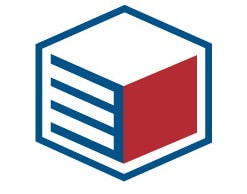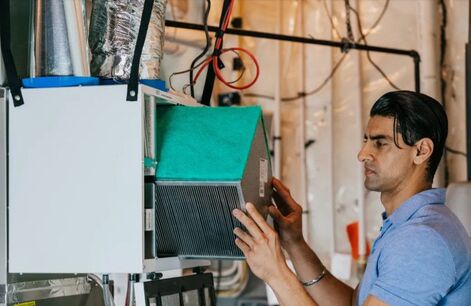|
A heat recovery ventilator (HRV) brings fresh air into your home without losing heat. Properly maintained, an HRV can reduce energy costs and improve your indoor air quality. You can increase the lifespan and efficiency of your HRV by doing regular maintenance just twice a year, in the spring and fall. It takes only a few minutes to follow these simple steps, and keep your HRV in good working condition:
1. Check outdoor intake and exhaust hoods Remove leaves, dirt and debris from the pest screens. The screens are located behind the louvred weather hoods, and the intake hood will be the dirtier one. If these vents are blocked, your HRV won't function properly. Ensure the weather hoods are securely replaced when you are finished. Note these plastic hoods may deteriorate over time due to UV weathering. Replacements can be purchased at most hardware and big box stores, or from your local HVAC supplier. 2. Clean or replace the air filters Dirty filters can reduce ventilation efficiency. You should clean or replace your filters every spring and fall, or more often if you find them to be very dirty. If your HRV is easily accessible, this takes only a few minutes to complete. Filters in most HRVs can be easily removed, vacuumed, and washed with mild soap and water. Replacement filters can be purchased at most hardware and big box stores, or from your local HVAC supplier. * Most HRV cabinets have interlock switches which remove power from the unit when the door is opened, however it is still a good idea to unplug the HRV when you are cleaning. 3. Clean the heat exchange core Check your HRV owner's manual for instructions on how to clean the heat exchange core. Washing it with soap and water will reduce dust that can build up inside the core and impede performance. Be gentle with the heat exchanger, it is easy to damage the aluminium or plastic wafers inside the core. 4. Clean the HRV fans Remove dirt that has accumulated on the blades by gently brushing them. Most new HRVs are designed to run continuously without lubrication. Older ones, however, need a few drops of motor lubricating oil in a designated oil intake. Check your HRV owner’s manual for instructions on how to put oil in the intake. Check the condensate drain Your HRV should have a condensate drain. This is a pipe or plastic tube coming out of the bottom of the HRV. Slowly pour a few cups of warm water in each drain pan inside the HRV. If there's a backup, clean the drain until the water flows freely. A spoonful of OxyClean dissolved in your rinse water is a good solution for a dirty, clogged condensate drain. Clean grilles and inspect ductwork Once a year, check the ductwork leading to and from your HRV. If your system is fully ducted you will have round grilles in the laundry and bathrooms, and a rectangular one with a grease filter in the kitchen. If your system is not fully ducted, there will be one or two larger grilles, typically high on a wall somewhere central to the home. Remove and inspect the grilles. covering the duct ends, then vacuum inside the ducts. If a more thorough cleaning is required, call your HVAC service company. Watch this easy cleaning video!
0 Comments
Leave a Reply. |
AuthorGil Strachan is a professional home inspector, representing Electrospec Home Inspection Services in east-central Ontario since 1994. CategoriesAll Appliances Buying And Selling Cooling Electrical Environmental Exterior Health And Safety Heating Home Improvement Home Inspection Insulation Insurance Interior Plumbing Roofing Special Structure Archives
January 2024
|


